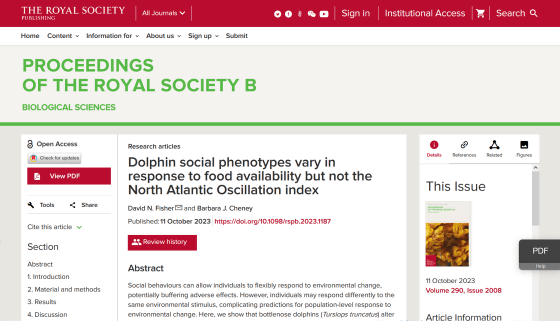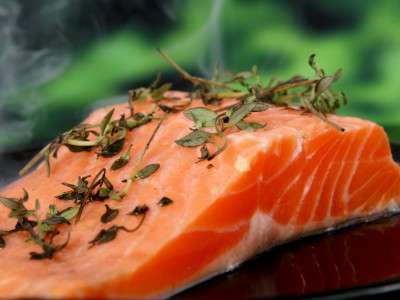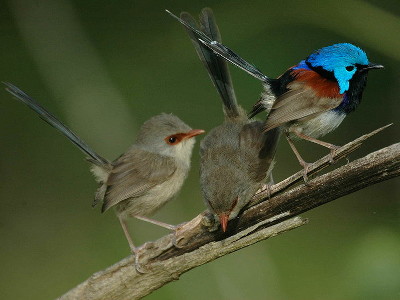Research shows that the more food dolphins have, the more social they become.

Dolphins are very intelligent animals and communicate within their groups to form social relationships. Research at
Dolphin social phenotypes vary in response to food availability but not the North Atlantic Oscillation index | Proceedings of the Royal Society B: Biological Sciences
https://royalsocietypublishing.org/doi/10.1098/rspb.2023.1187

Dolphin friendships facilitated by fishy feast! | News | The University of Aberdeen
https://www.abdn.ac.uk/news/22363/
Many animals communicate with each other, and the social interactions that occur affect group behavior. It is also known that the social behavior of individuals changes in response to environmental changes, and understanding the influence of the environment on animal behavior is important for wildlife conservation.
This time, a research team from the University of Avandeen investigated whether the social behavior of bottlenose dolphins , which are distributed in oceans around the world, changes depending on food abundance and climate change. Dr David Fisher, who led the study, said: ``As part of our long-term study of bottlenose dolphins, we wanted to investigate how changes in the number of salmon they feed on and changes in climate affect their social behavior. 'I did it,' he said.

The University of Abendean continuously tracks the population of bottlenose dolphins on the east coast of Scotland, photographing them from small boats every year. The photos were taken when the bottlenose dolphin approached within 100 meters from the boat, and each bottlenose dolphin was identified by comparing it with previously photographed individuals.
The research team analyzed photos taken from 1990 to 2021 to investigate the social relationships of bottlenose dolphins. Individuals photographed together are determined to have a ``social relationship,'' and we are investigating which individuals had social relationships with each other and when, or whether they did not.
As indicators of environmental factors that may affect the social relationships of bottlenose dolphins, the ``

The analysis showed that bottlenose dolphins had more social interactions with other individuals during months when salmon abundance was high than during months when salmon abundance was low. 'This may be because the dolphins become more social due to reduced competition for food,' Dr. Fisher said.
Looking more closely, we found that when there was a large population of salmon to feed on, social interactions with neighboring and distant dolphins within the population increased over short periods of time, such as months, but over long periods of time, such as years. Social interactions with distant dolphins have decreased. This is thought to be because when salmon are scarce, dolphins travel long distances in search of food, and when food is plentiful, their relationships with dolphins from far away become weaker.
They also found that the North Atlantic Oscillation Index had no effect on the sociability of bottlenose dolphins. Dr Fisher said: ``Our study also found that dolphins did not change their social behavior in response to atmospheric conditions, suggesting that certain regular climate cycles directly influence dolphin behavior. 'Knowing this makes it easier to predict how populations of animals like dolphins will respond to climate change.'
Related Posts:







